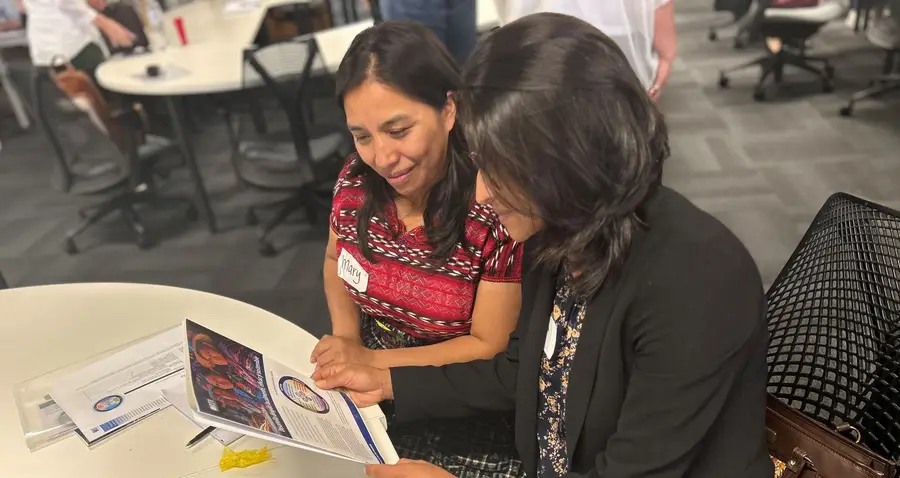
In the past year, there has been no shortage of articles and attention-grabbing headlines onlocally led development (LLD). Most of them are sharply critical of the U.S. Agency for International Development’s (USAID) performance in this area and have questioned what’s stopping the Agency from localizing.
During this same period, I’ve been supporting USAID’s Advisory Committee on Voluntary Foreign Assistance (ACVFA) on this very topic. ACVFA is the only public body to provide official input to USAID on how it can improve its development and humanitarian assistance. I had the honor of drafting the ACVFA paper, Maximizing USAID’s Effectiveness: Recommendations for Improving Locally Led and Inclusive Development, under the ACVFA Inclusive Development Subcommittee.
In reflecting on the challenges of LLD and making recommendations to USAID’s Administrator on how the Agency can better overcome them, I began to ponder a more uncomfortable question: Why are we looking primarily at USAID to be the change agent and not ourselves? What are we, as international implementing partners (IPs) and development institutions, doing to promote LLD?
Because LLD is about more than USAID giving money directly to local institutions, there is a lot that international IPs can and should do to support their empowerment. USAID’s LLD goal to have 50% of projects represent local voices and leadership means there is not just a role for international IPs to play, but a responsibility for them to do development differently. Even if USAID meets its target to provide 25% by 2025 in direct funds to local institutions, international IPs will continue to receive most of the Agency’s funding.
USAID cannot do this alone; it is time to recognize that LLD will not be fully realized unless international IPs also change their practices. At RTI International, we have made commitments in support of promoting LLD; while this is a journey that will take time to realize and sustain, it is a positive step forward to help us achieve change.
6 Practices for International Implementing Partners to Promote LLD
In this blog post, I share six priority practices that international IPs can and should adopt to promote LLD and, in doing so, contribute to changing development for the better. Some of these are referenced in the ACVFA Inclusive Development Subcommittee’s paper but are focused on USAID actions as opposed to international IPs.
(1) Incorporate Locally Led Development Priorities into Institutional Strategy
Locally led development is still often treated as an institutional initiative and not connected to larger organizational strategies and values, creating insufficient attention and resources to support it. Incorporating LLD into strategic goals elevates the weight of this work, demonstrates leadership commitment, creates accountability, and connects resourcing to decision-making and action.
Re-orienting our work around LLD will likely mean staffing and/or recruiting differently, setting more aggressive goals for resource allocation to local partners so that they can assume greater leadership under projects, being more intentional in our local partnership strategies, and dedicating institutional resources to supporting local partners more holistically.
This may include translating resources into local languages, spending more time guiding partners on client and institutional policies and practices, and hiring more staff to connect the many dots of LLD from compliance and training to communications and inclusive development.
(2) Make Co-creation with Local Partners the Norm
We know that development solutions need to be jointly developed with local partners and stakeholders, but doing this well is often much easier said than done. For local partners to have a meaningful seat at the table, they must have a voice at every stage of programming, including project design. USAID has been heavily critiqued for not involving local partners sufficiently at this stage, but international IPs also need to do more.
We often blame short client proposal deadlines, local partner non-exclusivity on solicitations, or cite that we have unique knowledge of what USAID expects to rationalize cutting corners on co-creation. International IPs must better plan and prepare for opportunities to identify local partners and ensure there is sufficient time to work with them; last-minute decisions to pursue a project should never be a justification to scrap co-creation.
Streamlining how we co-create with local partners who have more modest resources so that we are respectful of their time may mean doing a better job explaining processes and establishing mutual expectations, simplifying ways to seek input, or developing standards for co-creation to better guide proposal teams. It also should involve compensating local partners for their time when they participate in co-creation.
(3) Engage Local Institutions as True Partners and Increase Their Leadership Roles and Resources
Engaging local subrecipients and stakeholders as true partners that have an equal seat at the table (as opposed to top-down relationships where the work is merely subcontracted) is one of the most important yet difficult things to define and implement in LLD. Communication and relationship-building skills are critical, especially when navigating the inevitable, complex challenges that arise in projects. While not all imbalances can be avoided, how we manage them is key.
We can do many things right to shift power and provide larger leadership roles to our local partners, but communication practices that make our local partners feel unheard, undervalued, or talked down to can swiftly undermine LLD efforts. Articulating communications expectations with international IP staff, emphasizing them during onboarding, and building them into staff performance evaluations are all ways we can help strengthen and prioritize these skills.
Increasing leadership opportunities for local partners and creating more significant roles for them are also critical for them to lead development more fully in their own countries. International IPs need to move beyond mere consultation and assigning “support” roles to local partners. We must give local partners substantial project objectives to lead, the autonomy to plan and execute results, and opportunities to collect and analyze project data.
International IPs can support more assertive leadership roles for local partners by mutually defining them during co-creation and determining how to best leverage their skills, deep knowledge of the environment, and relationships within the ecosystem. If there is uncertainty about a local partner’s capacity, international IPs should consider a phased approach and articulate clear decision points on progression.
As the leadership roles and significance of the scopes of work for local partners increase, international IPs should also be prepared to allocate more significant resources to support them. Increased funding alone does not signify increased leadership, but without resources, local partners cannot take on significant roles.
(4) Hold Ourselves Accountable to Locally Led Development Results
USAID is looking for better ways to measure local leadership on projects when local institutions are subrecipients or key stakeholders on projects. This will not only help USAID to gauge and report on progress, but also create more accountability with international IPs. If international IPs are to be serious about LLD, we need to hold ourselves accountable and measure our own locally led development work.
This past year, as part of our LLD commitments to measuring our progress in this area, RTI launched an annual survey of our local partners, asking them to rate and comment on how we have engaged them and created opportunities for their leadership. Collecting and internalizing this feedback regularly will help us to understand gaps and what we need to improve upon. This data may not always be flattering, but it is essential for making improvements so that we can more fully realize LLD.
(5) Prioritize Local National Hires in Leadership Positions
In addition to prioritizing local partners, international IPs must also prioritize local national staff in leadership positions on projects and in other key institutional roles. At the core of LLD is strengthening institutional and individual local leadership, and local staff provide that. They bring invaluable expertise and understanding of the local context, and they are often best placed to successfully guide complex relationships with other local partners. Although international IPs are constrained by key personnel criteria set forth by donors, and identifying individuals in some environments may be more difficult, international IPs must be more assertive and commit to retaining and growing staff into these positions over the long term.
(6) Strengthen Our Focus on Inclusive Development
Inclusive development is not yet frequently discussed within the context of LLD, but if LLD is to be truly successful, local leadership must be diverse and representative of its respective society. Elevating only select local voices (and those already in positions of influence and/or power) has the potential to exacerbate inequitable power dynamics and further marginalize vulnerable groups.
Each group has unique needs and challenges, which vary from country to country. Understanding these needs requires that international IPs work closely with local partners that have a deep knowledge of these groups so that we avoid doing harm, such as increasing stigmatization, isolation, or reprisal. While international IPs should rely on local institutions for support, we also should have foundational knowledge and strategies that involve working with an array of marginalized and vulnerable groups.
Embracing Change for Locally Led Development
Working differently with local partners as international IPs requires us to make changes to our practices, policies, and most importantly, culture. At its core, realizing LLD means re-thinking how we do development and dismantling and/or altering deeply rooted practices. This transformation requires sustained commitment, resources, and a long timeline.
I’ve experienced this firsthand at RTI: While we’re fortunate to have senior leaders committed to LLD, change will take time. A first step has been to form a LLD Task Force which I’ve helped to lead, along with the creation of resources to guide staff, examine changes in practices, and make investments in LLD learning events and strategic partnerships.
LLD is messy, risky, and complex – and we need to get used to it. International IPs must become more adept in taking risks, thinking creatively, and learning to navigate complex situations collectively with local partners and donors. We also need to rethink our revenue models, proposal partnership strategies, and become more comfortable with increasing funding and shifting power to local partners.
As we look to USAID to change its own practices, we also need to look inward and ask ourselves: what’s stopping us from localizing and what can we do to start changing development?
Learn more about our work in prioritizing locally led development.

